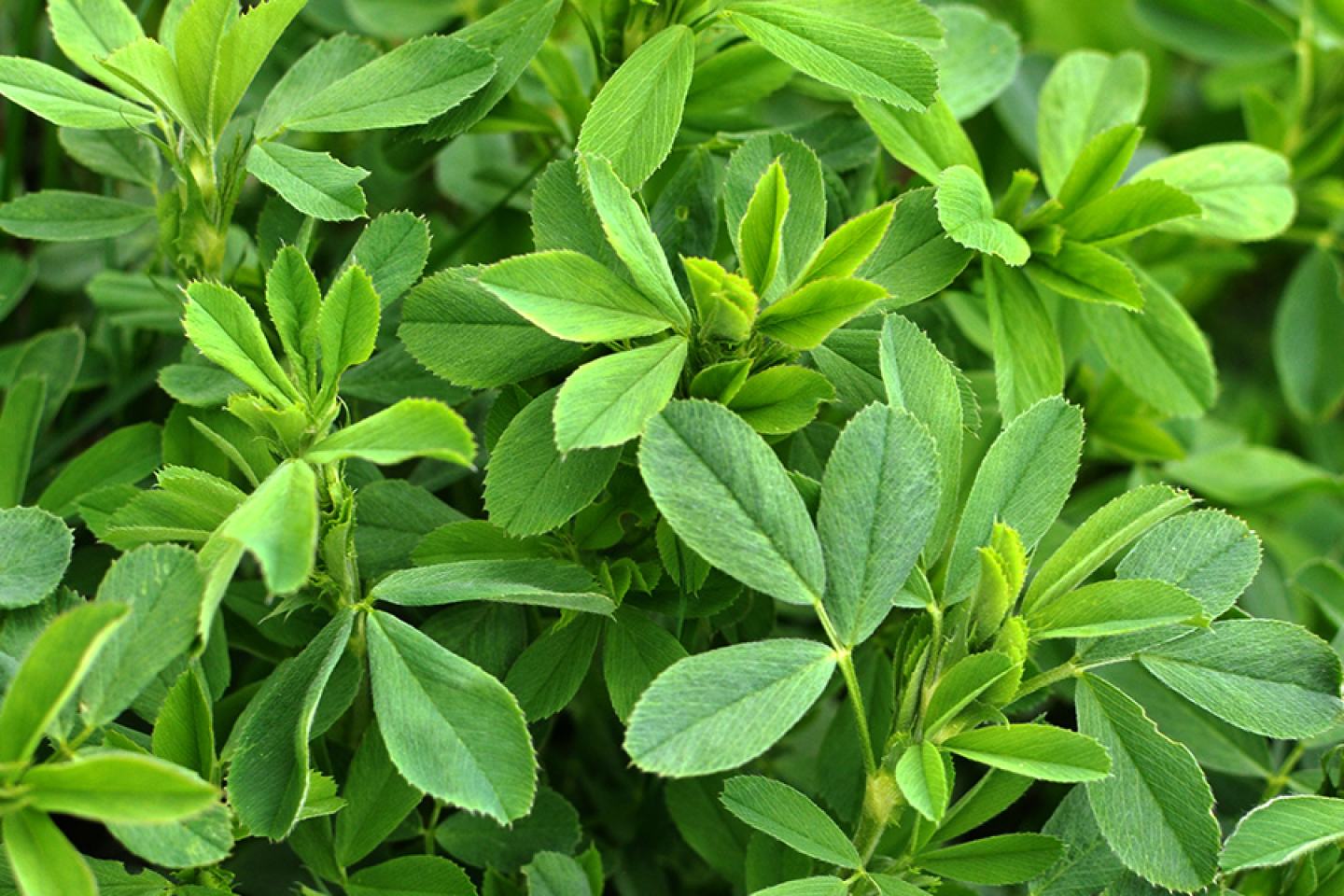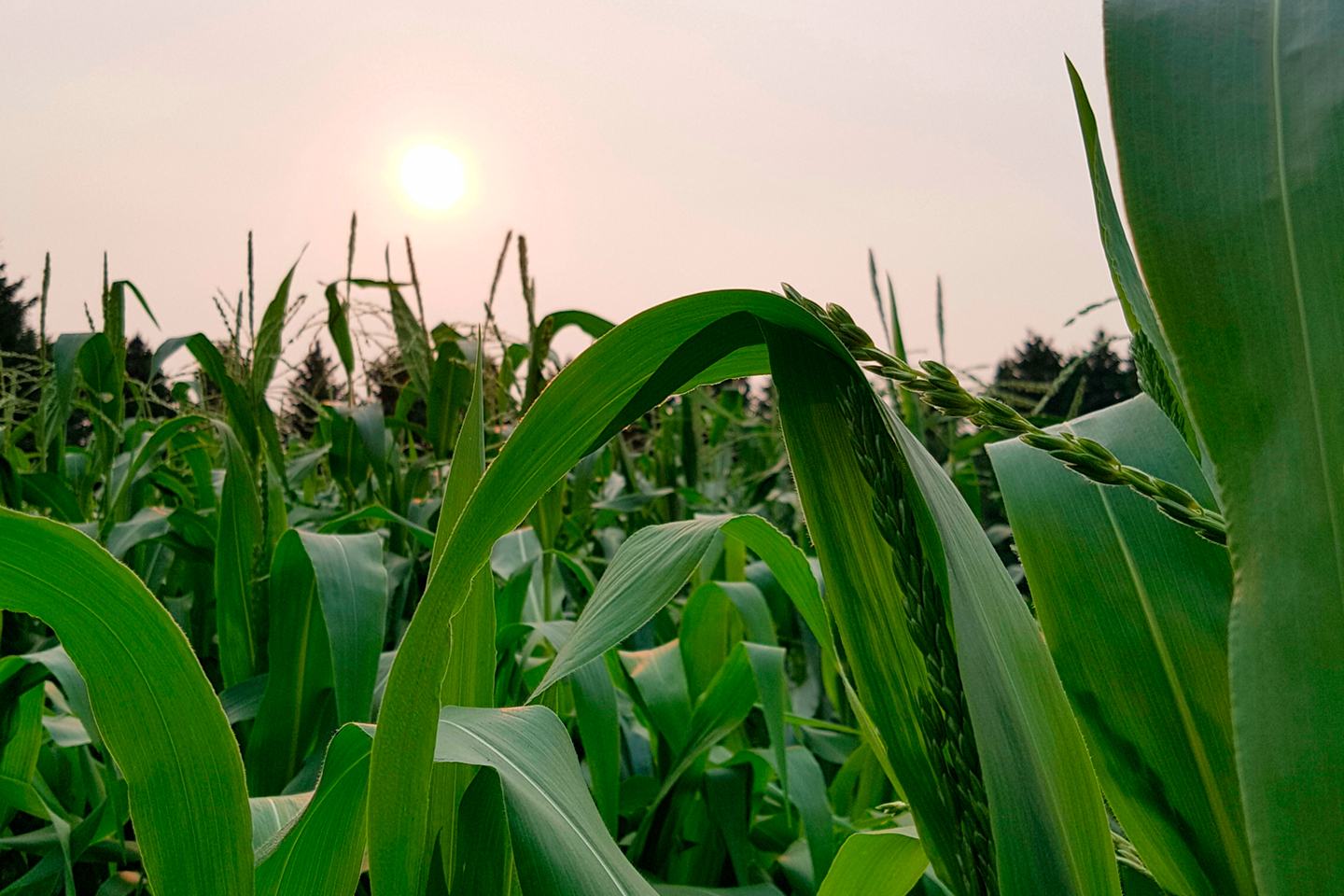Read the entire report from
our technical services team
Realize optimum alfalfa quality and yields through consistent insect control. It doesn’t take long for alfalfa weevils to cause costly damage to your first alfalfa cutting. Count on Steward® EC insecticide from FMC to keep alfalfa weevils from taking a bite out of your profits. Below are a number of factors to consider when using Steward EC insecticide to control alfalfa weevil larvae.*
PROPER AMOUNT OF ALFALFA GROWTH PRESENT
When applying Steward EC insecticide, ensure that at least 6-8 inches of new growth is present at application. For optimal control, larvae must consume the treated foliage.
EARLY-SEASON WEEVIL LARVAL PRESSURE
If an abundance of larvae are present early in the season with minimal alfalfa growth (<6 inches) and several weeks left before harvest, one recommended approach is to knock down larval populations with a pyrethroid or an organophosphate and follow with Steward EC insecticide. University studies in KS, OK and CO have shown the efficacy of one such pyrethroid, lambda-cyhalothrin, to be declining. It is not recommended for use in weevil larvae control.
SIGNIFICANT COLD SNAP
Do not make Steward EC insecticide applications two days before or after significant cold temperature drop. Newly hatched larvae will go deep in the new terminal growth and larger larvae will drop to the ground because of a cold snap and not feed, thus reducing the effectiveness of the insecticide application.
Cold snaps can cause young alfalfa weevil larvae to go deep in the terminal and large larvae drop to the ground and not feed.
PROPER SPRAY COVERAGE
Spray coverage is essential for Steward EC insecticide to work effectively. Higher spray volumes of 3-5 GPA by air or 15-20 GPA by ground will provide better coverage and performance. As the alfalfa grows, the amount of surface area to be covered increases. For effective control, good penetration of the new terminal growth to get the young larvae and the canopy to get the older larvae is needed.
USE OF SURFACTANTS
Improve coverage and control by adding surfactants such as NIS, COC/MSO or organo-silicone at 1/4-1/2% by volume. Surfactants will help get down in the tight terminal tissue to where young larvae are located and spread and stick evenly throughout the canopy where the older larvae feed.
MONITORING OF RESISTANCE
If the above factors are achieved, effective control can be accomplished with Steward EC insecticide. If one of these factors is overlooked, then control may be reduced. Oftentimes when effective control is not achieved, there is concern of resistance. At FMC, we are monitoring the susceptibility of alfalfa weevil larvae to Steward EC insecticide through a three-pronged approach. The susceptibility of weevil larvae to Steward EC insecticide is evaluated by vial bioassays, leaf dip bioassay and small-plot research trials. To date, no known resistance or decreased susceptibility has been detected with Steward EC insecticide and alfalfa weevils.
*This Steward EC insecticide recommendation is made as permitted under FIFRA Section 2(ee) for the management for the control of alfalfa weevil larvae and Egyptian alfalfa weevil larvae and for tank mixtures with organophosphate or pyrethroid insecticides when weevil larvae and aphids are simultaneous pests in alfalfa. This recommendation has not been submitted to or approved by the EPA. The 2(ee) expiration date is 12/31/2024.
Always read and follow all label directions, precautions and restrictions for use. Some products may not be registered for sale or use in all states. FMC, the FMC logo and Steward are trademarks of FMC Corporation or an affiliate. ©2021 FMC Corporation. All rights reserved. 21-FMC-1849 03/21



